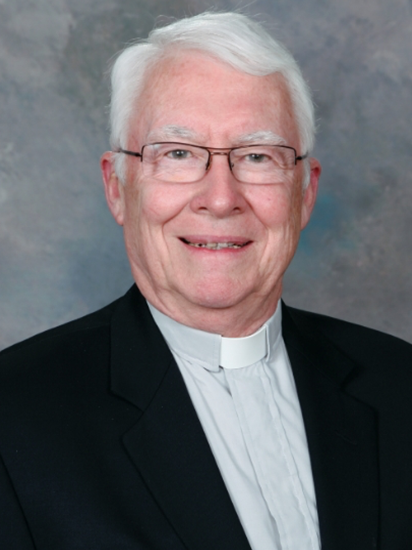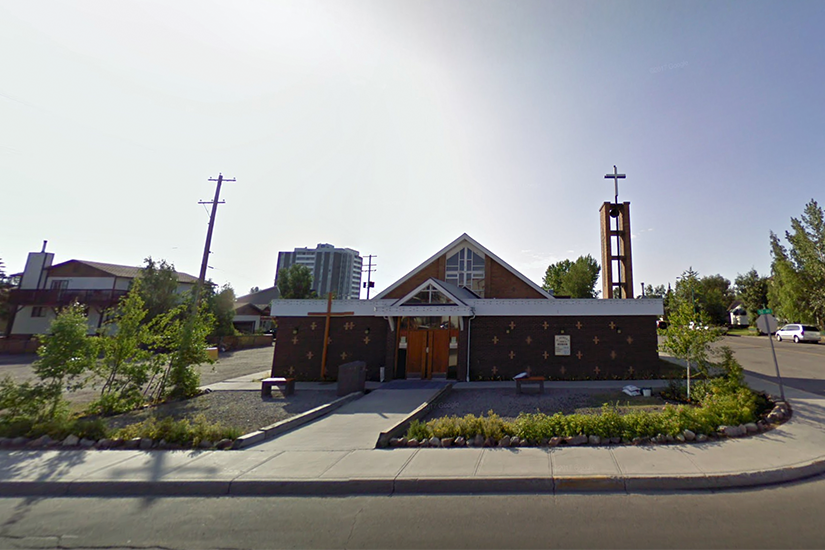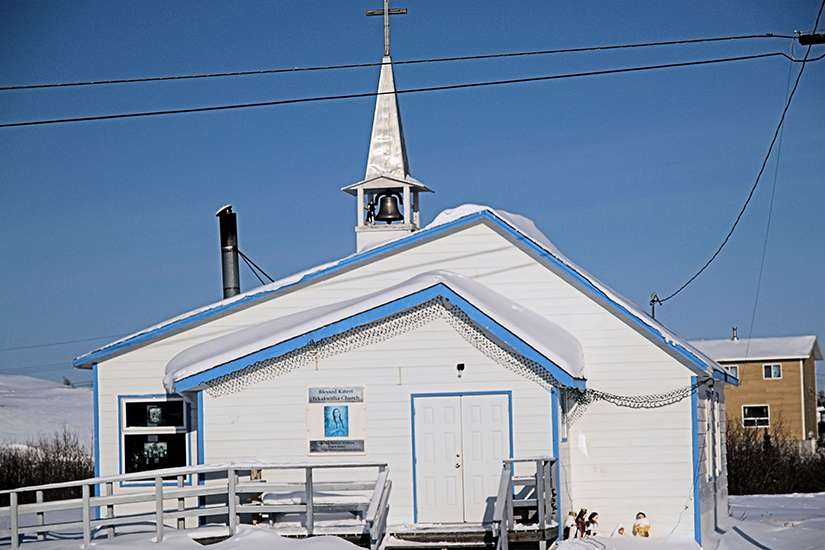 Fr. William Burns is the first priest to get a taste of a new mission ministry for the Archdiocese of Toronto. Hearing the diocesan-wide appeal for part-time and full-time priests in Toronto to mission to the Great White North, Burns was the first to volunteer.
Fr. William Burns is the first priest to get a taste of a new mission ministry for the Archdiocese of Toronto. Hearing the diocesan-wide appeal for part-time and full-time priests in Toronto to mission to the Great White North, Burns was the first to volunteer.
“Since I’ve been retired, I’ve been filling in for lots of other parishes in this diocese, so I thought, well, why not go where there is some need,” said the 78-year-old priest.
Burns visited and worked at St. Patrick’s Co-Cathedral in Yellowknife, N.W.T., for six weeks during the Advent and Christmas season.
“In terms of the Church there, they have great need for clergy,” said Burns. “They do have spiritual leaders in each community, people who are listening to the Word of God and praying the rosary, but with the Eucharist as the centre of our Catholic communities, they do need more priests.”
Burns said despite the cold, diminished hours of sunlight and only seeing a priest about once a month, the people in Yellowknife are warm and enthusiastic.
During his visit, Burns was also able to visit two Indigenous communities. On New Year’s Day, the people in Behchoko weren’t expecting a priest for another few weeks, so they were grateful when Burns visited them. A few days later, he flew to Whati where the people welcomed him to preside at a funeral for an elder woman.
“Every priest in Toronto should have the experience of ministry in the north,” said Burns. “I offer special encouragement to the priests involved in seminary and formation work.”
Burns said Toronto priests would benefit from this eye-opening experience in the north. It provides young priests a new perspective on the Canadian mission.
“Fr. Burns came back with a boyish smile on his face,” said Bishop Robert Kasun, Toronto auxiliary bishop and co-ordinator of what he has nicknamed the “North of 60” ministry.
 Fr. Burns visited and worked at St. Patrick’s Church in Yellowknife, N.W.T., for six weeks during the Advent and Christmas season.
Fr. Burns visited and worked at St. Patrick’s Church in Yellowknife, N.W.T., for six weeks during the Advent and Christmas season.
“He said I think our seminary professors should spend one summer and have an experience in the north so that when they come back and teach to their classes they can give a first-hand experience of the Canadian mission scene.”
Kasun said Toronto is fortunate to have a large and vibrant Church which also feels a responsibility to serve the needs of its northern brothers and sisters.
In 2016, the Canadian bishops established an agreement in which 25 of Canada’s southern dioceses paired up to support six northern dioceses. Being the largest diocese in Canada, Toronto was paired with two dioceses — Mackenzie-Fort Smith and Grouard-McLennan.
Kasun has been coordinating this project with the two northern bishops. Especially for Mackenzie-Fort Smith, which has its clergy spread too thin across the most expansive diocese in the country, Kasun said the greatest need by far is sending more priests.
Catholics in Toronto are well-served with about 800 priests working in its 221 parishes. Mackenzie-Fort Smith has seven priests for 36 parishes. Grouard-McLennan has 25 priests for 65 parishes.
Last summer, Kasun sent out a memo to Toronto’s priests looking for volunteers to serve in the north for a one- or two-year commitment. Two priests have volunteered so far, offering to serve two years in Mackenzie-Fort Smith.
“I think our Toronto priests are starting to see that even with two priests, they can do a huge amount,” said Kasun.
But since Burns’ short mission, Kasun said the two northern bishops are now considering volunteer possibilities for priests that can serve a shorter term of one or two months. These missions would mostly be catered to retired and semi-retired priests who can be embedded in one parish community for a high season like Advent, Lent or the summer season.
Kasun added that there are also opportunities for religious brothers, sisters and laypeople. Toronto’s Office of Catholic Youth is preparing its second young adult mission to Yellowknife, July 16-23.


